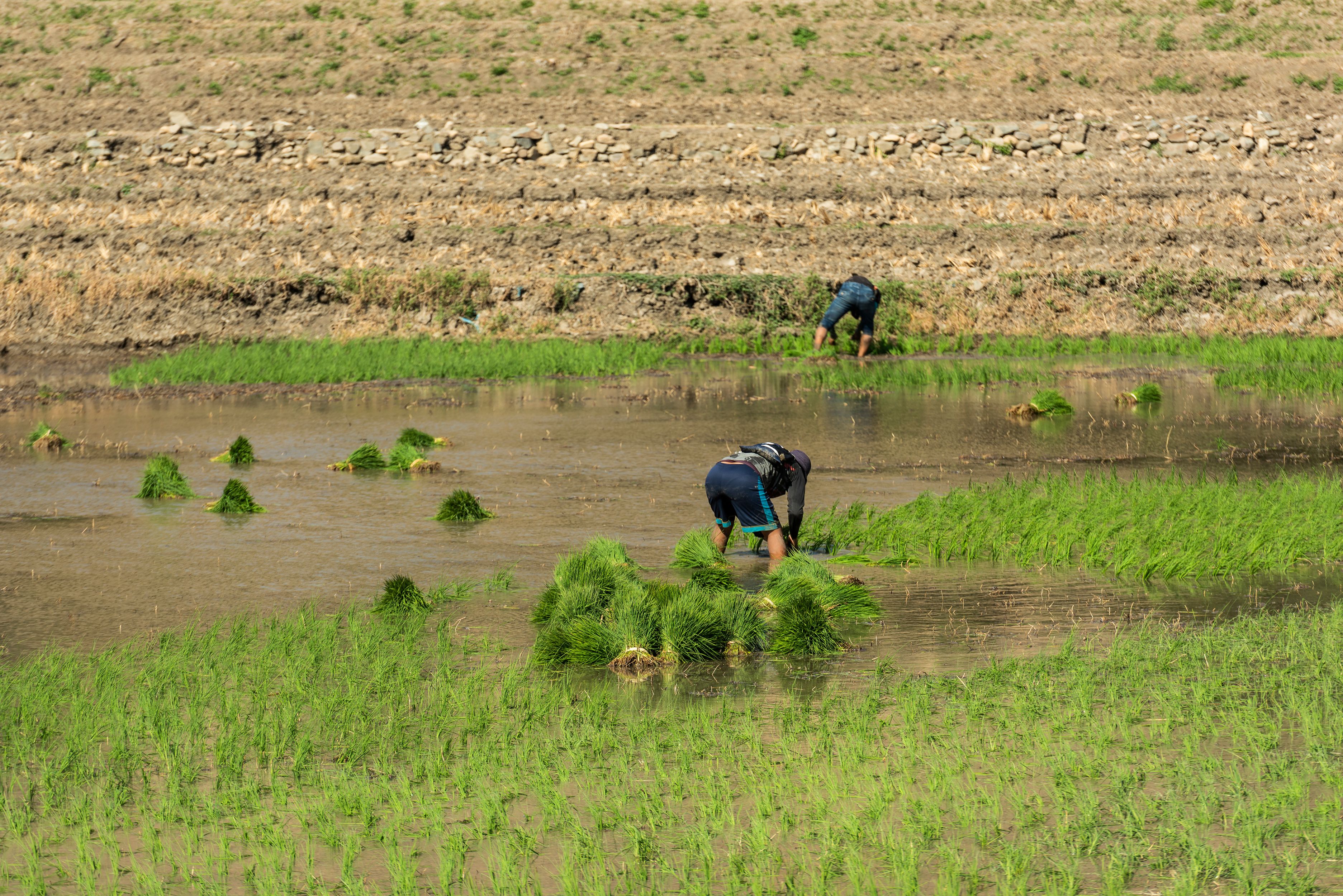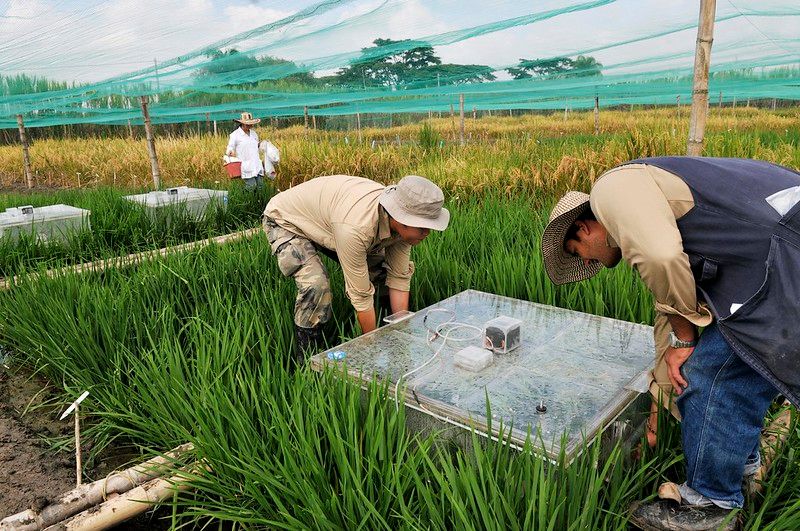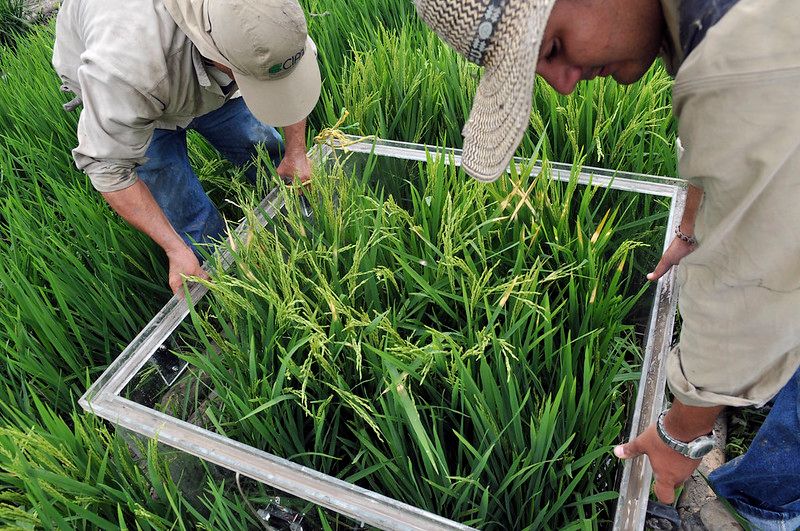What it is
In 2020, South America produced 2% of the world’s rice, generating 730 tonnes of methane emissions as a result of anaerobic decomposition of organic matter in flooded rice fields. When rice fields are flooded, organic matter underwater is cut off from oxygen, leading to anaerobic digestion and the production of methane. The methane is released into the atmosphere through water bubbles.

Rice farmers can reduce methane generated during rice production by planting different rice varieties, reducing how often paddy fields are flooded, changing sowing periods, and improving soil fertility.
Where it can be implemented
Rice farms across South America.
How it works
An array of agricultural practices and technologies can reduce methane generated during rice production. Rice varieties that require shorter periods of flooding lead to lower methane emissions by shortening the period in which methane is generated. Farmers can also deploy other water-saving technologies and alter their approach to flooding to reduce emissions.
Another solution is the system of rice intensification (SRI), which is a set of actions to improve productivity. It involves starting with a variety of rice seeds that are distributed optimally in space so they do not compete for nutrients, enhancing soil fertility, and minimizing water use. This solution is cost-effective because it does not require additional equipment to what is regularly used in rice agriculture.
Direct wet seeding is another alternative to traditional rice cultivation. Traditionally, rice is sprouted in a nursery before it is planted in a flooded field. With direct wet seeding, rice is planted and sprouted directly into a pre-puddled field. It is less labor, time, and water-intensive than the traditional approach.

Who’s doing it
Various South American countries have undertaken measures to reduce methane emissions from rice production. Colombia—one of the leading producers of rice in South America—has made efforts to improve the sustainability of its rice sector since the early 2000s. For example, the three-year “Más arroz con menos emisiones” (more rice with less emissions) project—led by Colombia in alliance with Peru, Chile, and Uruguay—supported small-holder rice farmers implementing alternate wetting and drying to reduce water use on their farms. Alternative wetting and drying involves alternately drying and re-flooding the rice field to use less water than continuously maintaining a flooded field. About 1,700 farmers who participated in the project showed a reduction in methane emissions of 37-98%. Alternative wetting and drying also reduced water consumption by 23%, on average.
Policy considerations

Financing
Governments can seek funding for rice production improvement from international non-governmental organizations, universities and research centers, industry groups, and international development financing. Rice production improvements can be connected to various issues for which funding is available, including climate resilience, climate mitigation, and food security.
The Colombia-led project mentioned above was funded by FEDERARROZ, the Colombian rice growers federation, the Agricultural Research Institute (INIA) in Chile, the National Agrarian University in La Molina, Peru, and the Regional Fund for Agricultural Technology (FONTAGRO), a co-financing mechanism for the development of agricultural technology in Latin America and the Caribbean. The collaborating countries also obtained financial support from the Latin American Reserve Fund (FLAR), which offers lines of credits and loans to member countries.
Engaging and educating farmers
To be successful, significant resources may be required to engage and educate farmers about rice production improvement. Farmers may also be hesitant about new methods reducing their yield. One approach is to develop a variety of pilot projects to test what works best for the local context and engage farmers. The government can guarantee the participating farmers’ income in the event that yields decrease.